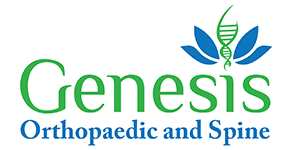Every time you bend over or raise your knee, these actions are powered by your hip flexors. When you strain this all-important muscle group, it can hamper your mobility and lead to considerable discomfort.
At Genesis Regenerative Sports and Aesthetic Medicine, our team of sports medicine and physical therapy experts has an in-depth understanding of the human musculoskeletal system, including your hip joints. When hip pain strikes, our goal is to get you back to moving freely again, which we accomplish through innovative treatments and patient education.
With education in mind, here’s a look at the role your hip flexors play, how they can be strained, and what we can do about it.
Hip flexors 101
Your hip flexors are a pair of muscle groups that are located on the front side of your hips and upper thighs, and they contain your:
- Iliacus and psoas major muscles, which are collectively called iliopsoas
- Rectus femoris, which is a muscle found in your quadriceps
Aside from these muscles, your hip flexors also feature tendons, which attach the muscles to your bones. This is an important point, as the strain may affect your tendon as well as your muscles.
Your hip flexors provide several movements, such as lifting your knees toward your chest or bending down and back up again.
Hip flexor strains
A hip flexor strain is much like any other muscle or tendon strain, in that it typically develops when the muscles are pushed past their limits or overused. This causes tiny tears to develop in the tissue, which leads to pain and inflammation.
There are three degrees of hip flexors strains, including:
- Grade I tear — only a few fibers are torn
- Grade II tear — there’s damage to a larger group of fibers, and you lose some function
- Grade III tear — the muscle is completely torn or ruptured
The activities that lend themselves to hip flexor strains are ones that typically involve kicking or jumping (think soccer). As well, cyclists are more prone to this type of sports injury thanks to the strain they place on their hip flexors when they pedal.
Treating hip flexor strains
If you’ve developed pain where your hip flexors are located, and it worsens when you try to directly engage them, you should come see us so that we can evaluate the extent of the problem. This is important, as it can save you from larger problems down the road.
Once we grade your strain, we recommend a treatment plan, which always involves rest, first and foremost. From there, we may recommend:
- Medications
- Physical therapy
- Icing therapies
- TenJet® procedure to remove damaged tissues
- Regenerative medicine, including platelet-rich plasma therapy
If you suspect you have a hip flexor strain, please contact our office in Westfield, New Jersey, to set up an appointment.











